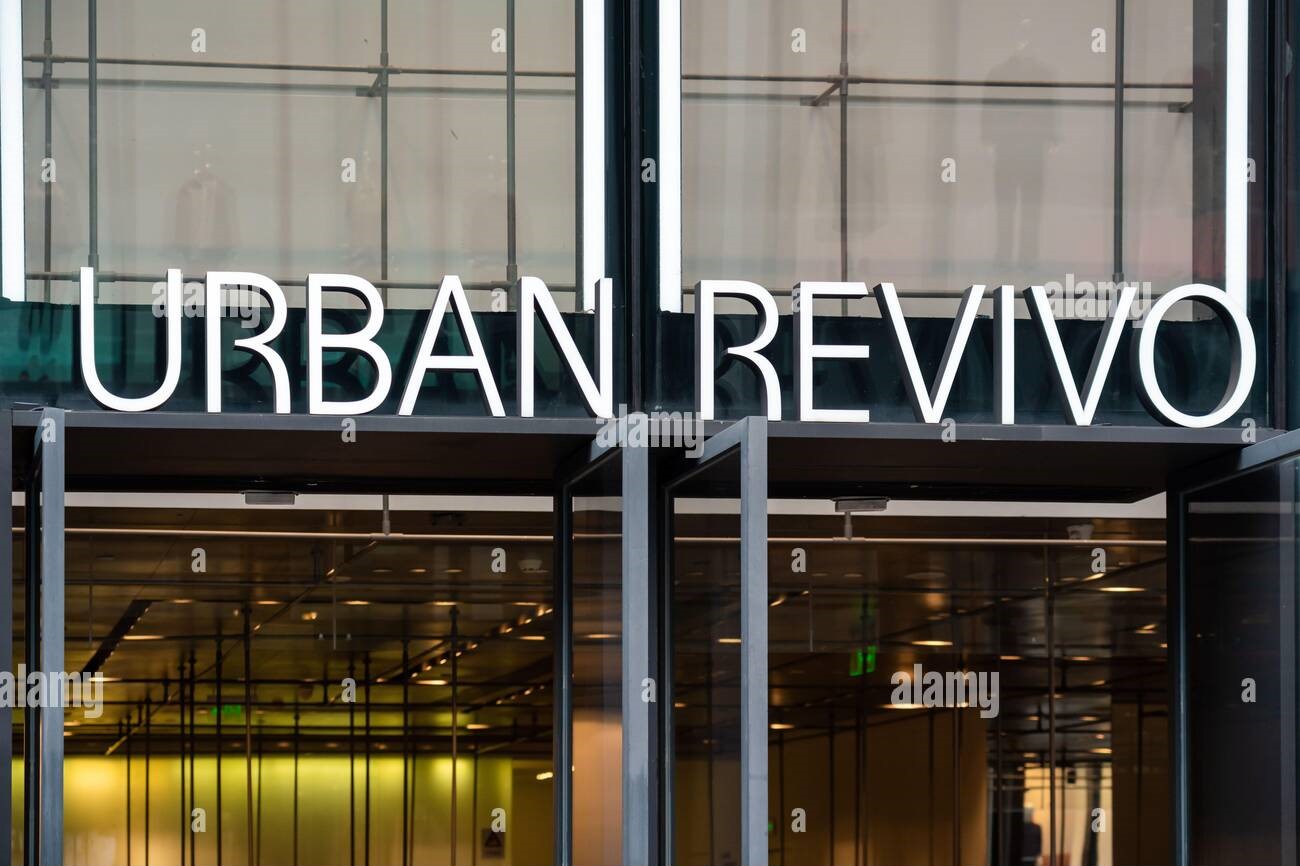Many fast fashion brands are declining internationally. In terms of the Chinese market, brands such as Bershka, Pull&Bear, and Topshop have all moved to online channels and closed their offline stores. Forever 21 directly excused itself from the Chinese market. H&M has been in hot water since the Xinjiang Cotton scandal, and there are rumours saying GAP will exit the Chinese market as well. But local fast fashion brands have growing rapidly in China. One of them is Urban Revivo.

Urban Revivo was founded in 2006 in Guangzhou. The brand got its start by learning from the fast fashion giant ZARA, and now it has explored its own growth path, which we will cover in the following paragraphs.
In 2020, Urban Revivo achieved over 5 billion RMB in sales, and it has over 300 offline stores worldwide. The brand positions itself as having higher quality than the majority of fast fashion brands but it’s cheaper than entry luxury brands. Every year it launches around 10k new products for its customers, with the launching frequency of twice a week.

What else makes it different from other fast fashion brands?
Urban Revivo Focuses on Hero Products
On May 21, Urban Revivo held a fashion show featuring a collaboration collection with Chinese designer brand PRIVATE POLICY and the New York City-based brand alice + olivia. PRIVATE POLICY is the first Chinese designer brand to have a show during New York Men’s Fashion Week, and alice + olivia is the apparel brand that often show up in high-end shopping malls. Both of them have high recognition on the international market.

The show held by Urban Revivo specifically featured dresses. This is because Urban Revivo positions itself as a feminine brand and its core customers are females. Besides, dresses are a hero product of the brand, and contribute a lot for its sales revenue.
By emphasizing this hero product and present it in the format of fashion show, UR is making its dresses a go-to choice. When consumers are thinking about buying dresses, they will think of Urban Revivo.
Each Urban Revivo store has different decor
The fashion show on May 21 was held in Urban Revivo’s flagship store in Guangzhou. The store takes up 4.6k square meters, which is Urban Revivo’s biggest offline store. Since its opening in August 2020, the store has achieved nearly 100 million RMB in sales.

While most fast fashion brands are reducing their offline presence and even closing stores, Urban Revivo is doing the opposite. What also makes it different is that, many brands, not only fast fashion brands are having the same decoration styles of their offline stores, but Urban Revivo is giving its stores multiple possibilities.
Founder of Urban Revivo, Li Mingguang (李明光) believes that innovative and novel offline shopping experiences are becoming more and more important. He especially like the idea of SKP-S, which is a young high-end shopping mall designed for young consumers. It features art exhibitions and requires brands to have constantly changing themed stores. Many of the stores offer co-branded products and limited edition drops here – consumers can’t find these products anywhere else.
Instead of expanding quickly, Li wants to focus on opening big offline stores such as the Guangzhou one and have top designers to design them. He wants to create an interactive shopping space for Urban Revivo’s customers.

But products will be the same either domestically or internationally
Though Li wants his stores to be different from each one, he wants Urban Revivo’s products to be the same both domestically and globally.
He feels that if a product cannot be accepted globally, that only means the product is not fashionable enough. At the moment, Urban Revivo has a team of more than 500 designers. The brand built a design centre in London in 2019, and it is planning to build more in New York, Paris, Milan and Tokyo. The brand wants to bring its customers products with international aesthetics.
How does Urban Revivo interpret the fast fashion industry?
It is a tricky time for Urban Revivo. Li feels that most consumers don’t understand why some of the fast fashion brands that they used to be very familiar with have declined. Some consumers assume the decline of those brands signal the decline of the fast fashion industry. But Li believes that the core reason is that, consumers, especially Chinese consumers, are changing very quickly, while those brands failed to react fast to those changes in terms of their products and services. It also needs to be brought up that Chinese consumers are becoming pickier with quality than ever. They are becoming hard to please.
With the decline of some of the fast fashion brands, Li believes that it is good timing for Urban Revivo to break through and stand out in the Chinese market. What’s more, with COVID accelerating Western’s consumer’s adoption of e-commerce, Li thinks that it is time to ramp up the brand’s efforts in international markets with the help of ecommerce.












